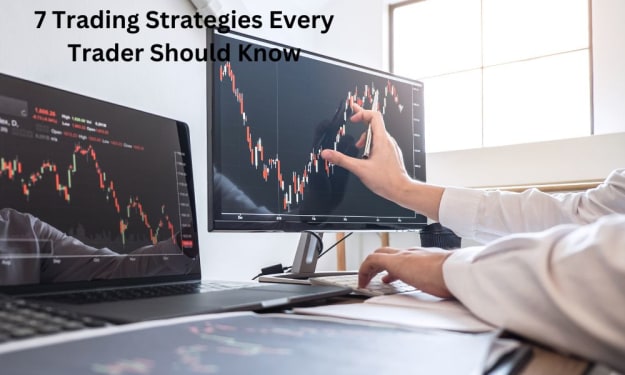Understanding the Differences Between Forex and CFD Trading
Forex and CFD Trading

Forex and CFD trading are two popular forms of trading that many traders engage in. While they may seem similar, there are important differences between the two that traders need to understand to make informed decisions. In this article, we will delve into the differences between forex and CFD trading.
What is Forex Trading?
Forex trading is the buying and selling of currencies. It involves trading currency pairs, such as EUR/USD or GBP/JPY, with the goal of profiting from changes in the exchange rate between the two currencies. Forex trading is the largest financial market in the world, with an average daily turnover of around $6.6 trillion.
How Forex Trading Works
Forex trading is conducted through a broker who gives traders access to the interbank market. Traders use various technical and fundamental analysis tools to predict future price movements and place trades accordingly. The profit or loss of a forex trade is determined by the difference in the exchange rate between the two currencies traded.
Advantages and Disadvantages of Forex Trading
Forex trading is highly liquid, which means traders can easily enter and exit trades at any time. Additionally, forex trading has high leverage, meaning traders can control a large position with a relatively small initial investment. However, forex trading is also highly volatile, and traders need to be able to manage risk effectively to avoid significant losses.
600+ Fake Loan Apps List 2023:
What is CFD Trading?
CFD trading is the buying and selling of contracts for difference (CFDs). A CFD is a financial instrument that allows traders to speculate on the price movements of an underlying asset, such as a stock, commodity, or cryptocurrency. CFDs are popular because they allow traders to gain exposure to an asset without actually owning it.
How CFD Trading Works
When you trade CFDs, you don't own the underlying asset. Instead, you are speculating on the price movements of the asset, and your profit or loss is determined by the difference between the opening and closing price of the CFD.
Advantages and Disadvantages of CFD Trading
CFD trading is popular because it allows traders to gain exposure to a wide range of assets, including those that may be difficult or expensive to trade directly. Additionally, CFDs offer high leverage, which means traders can potentially make larger profits with a smaller initial investment. However, CFD trading is also highly risky, and traders need to be able to manage risk effectively to avoid significant losses.
Key Differences Between Forex and CFD Trading
Trading Instruments
The primary difference between forex and CFD trading is the range of instruments that can be traded. Forex trading is focused exclusively on currency pairs, while CFD trading allows traders to trade a wide range of underlying assets, including stocks, commodities, and cryptocurrencies.
Leverage and Margin Requirements
Forex brokers often offer high leverage ratios of up to 500:1, which means that traders can control large positions with a relatively small initial investment. CFD brokers also offer leverage, but the maximum ratios are typically lower, usually around 20:1 or 30:1. Additionally, CFD brokers typically charge fees such as spreads and commissions, which can eat into traders' profits.
Costs and Fees
Forex brokers make money by charging traders a spread, which is the difference between the buy and sell prices of a currency pair. Some forex brokers may also charge additional fees, such as commissions or swap fees. CFD brokers also make money through spreads and commissions, and may charge additional fees for overnight financing or other services.
Similarities Between Forex and CFD Trading
Both involve trading on margin. This means that traders can control large positions with a relatively small initial investment.
Both are highly volatile and carry a significant risk of loss. Traders need to be able to manage risk effectively to avoid significant losses.
Both involve speculating on the price movements of an underlying asset. In forex trading, traders speculate on the exchange rate between two currencies, while in CFD trading, traders speculate on the price movements of an underlying asset.
Both require technical and fundamental analysis to make informed trading decisions. Traders use various analysis tools to predict future price movements and place trades accordingly.
Both are conducted through brokers, who provide traders with access to the markets and trading platforms.
Conclusion
In conclusion, while forex and CFD trading share some similarities, there are also important differences between the two that traders need to understand. Forex trading is focused exclusively on currency pairs, while CFD trading allows traders to trade a wide range of underlying assets. Additionally, forex brokers often offer higher leverage ratios than CFD brokers, but may charge additional fees. Traders need to carefully consider the risks and rewards of each type of trading and choose the one that best fits their goals and risk tolerance.





Comments
There are no comments for this story
Be the first to respond and start the conversation.